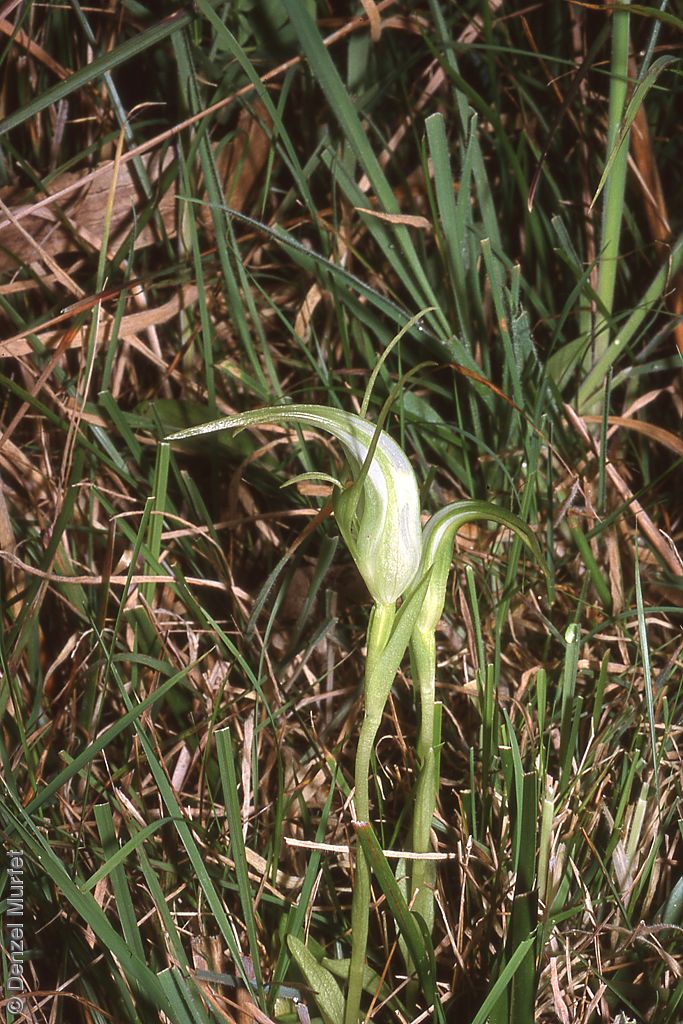
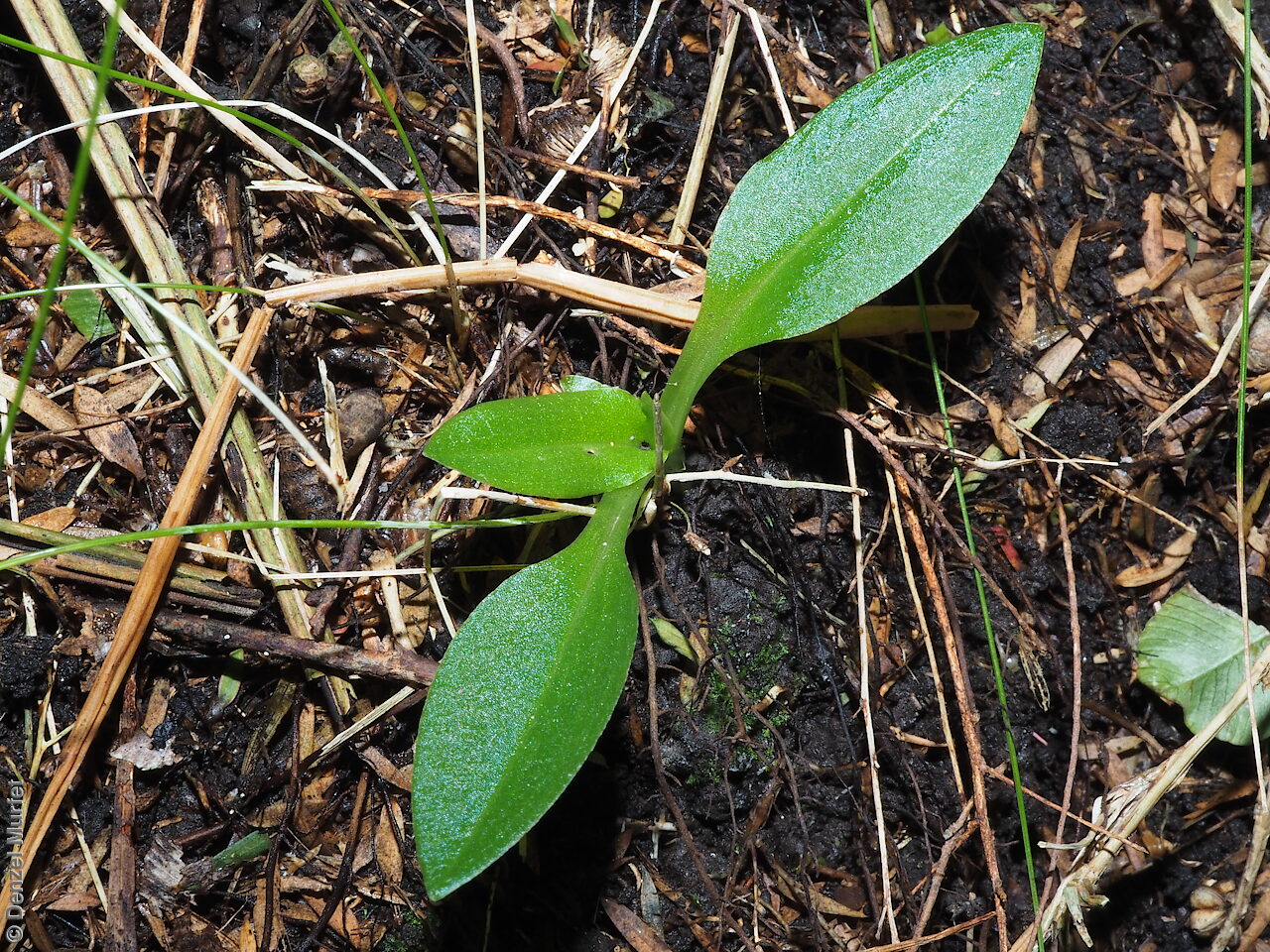
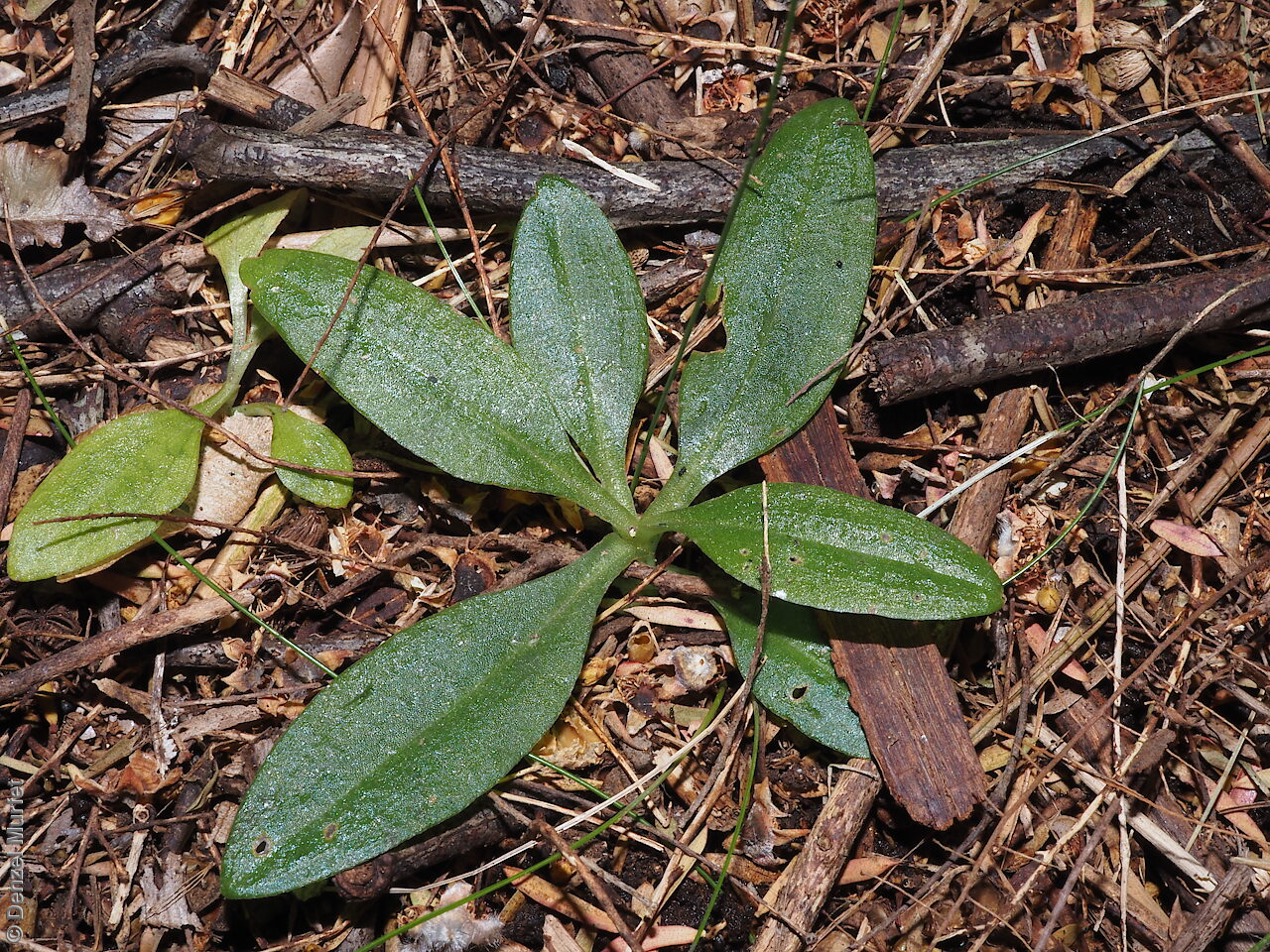
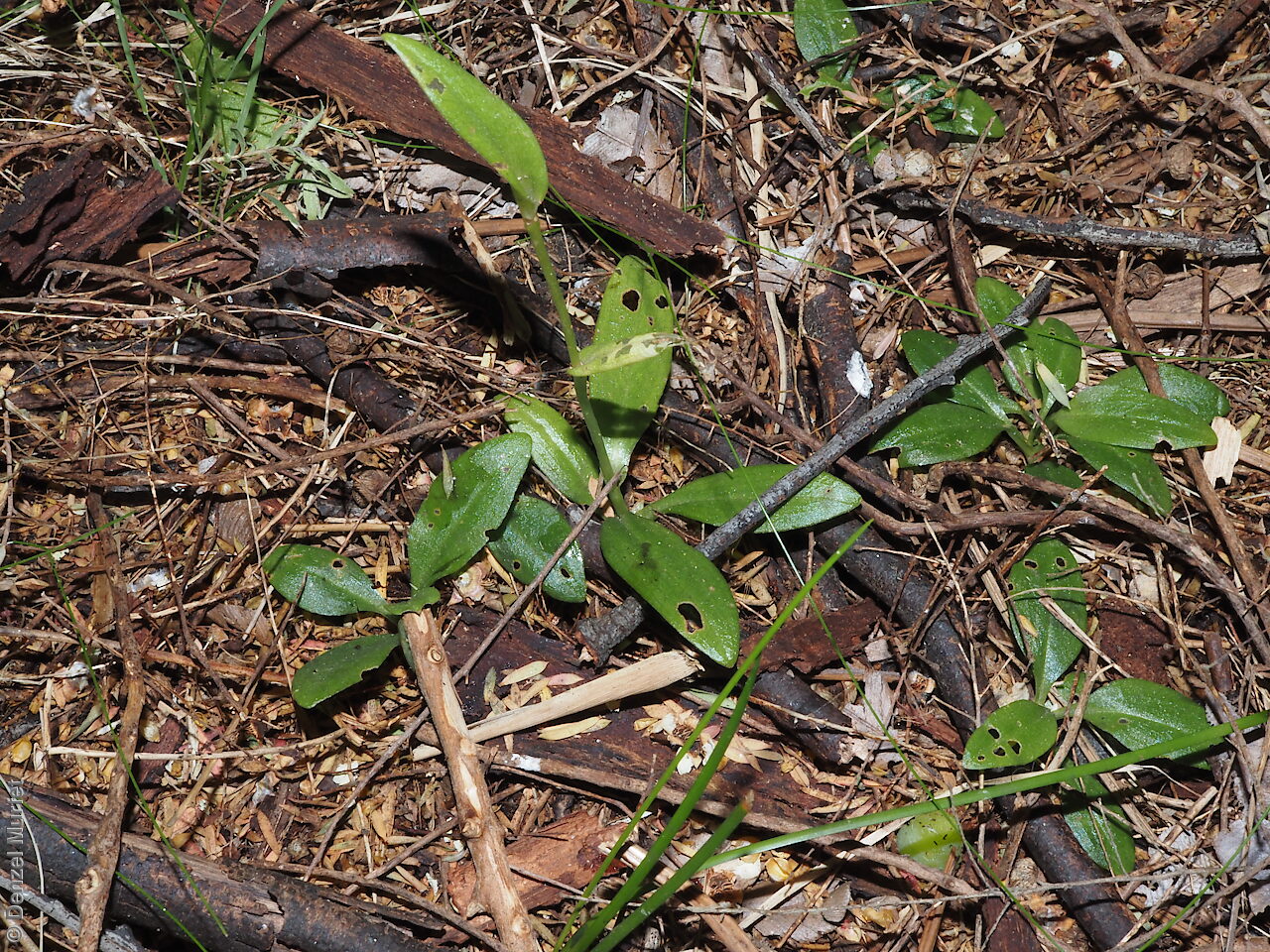
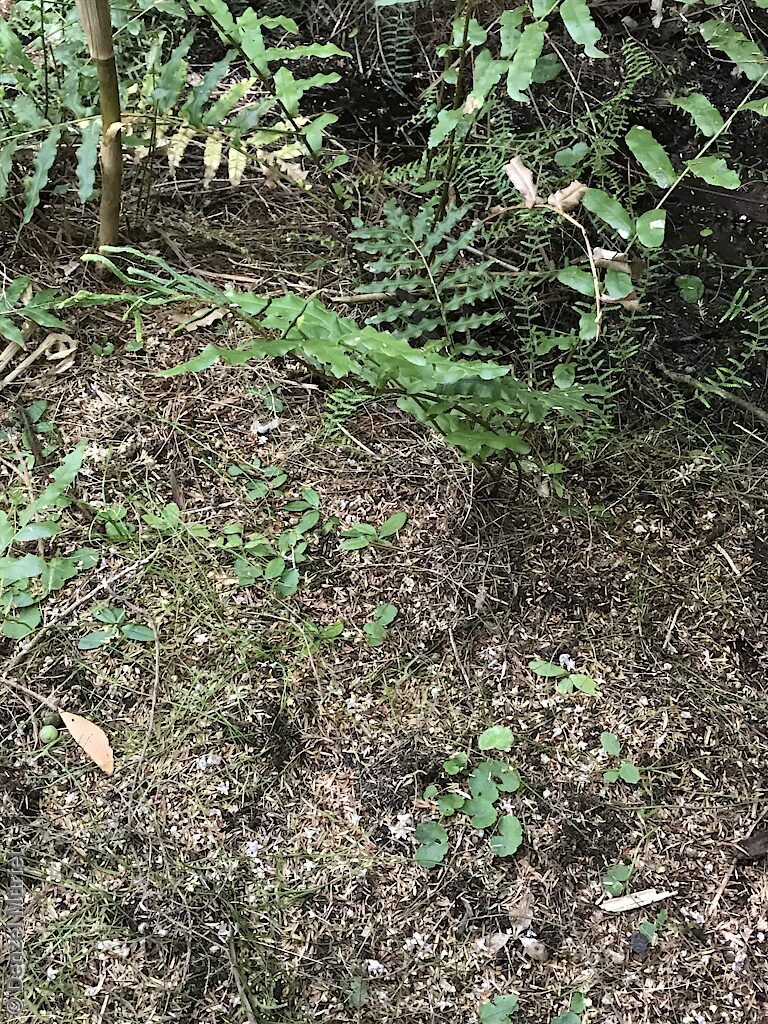
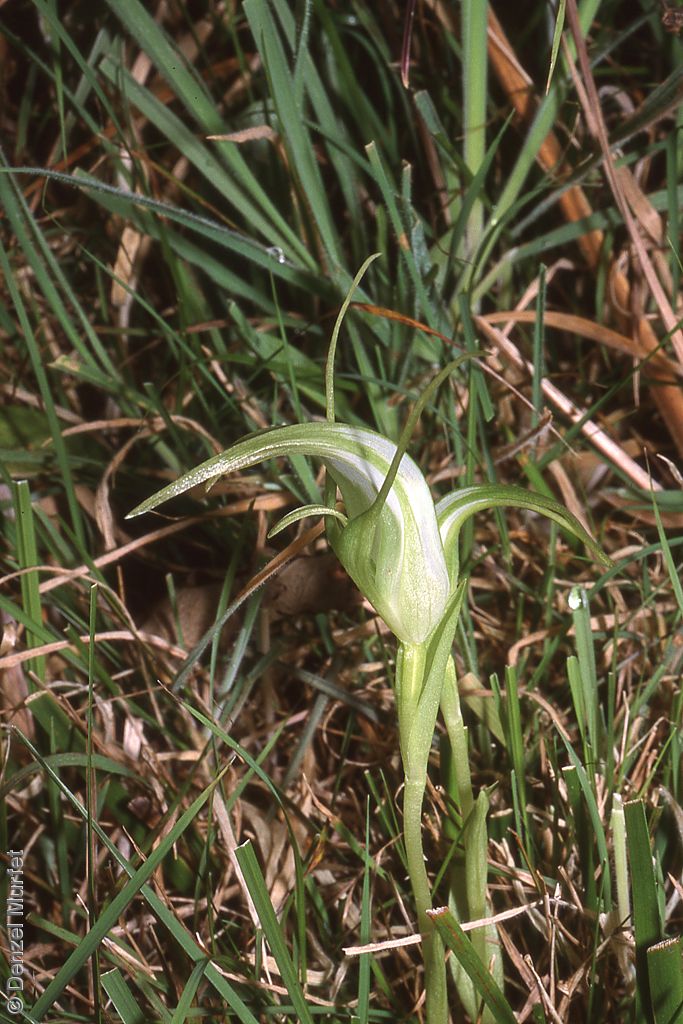
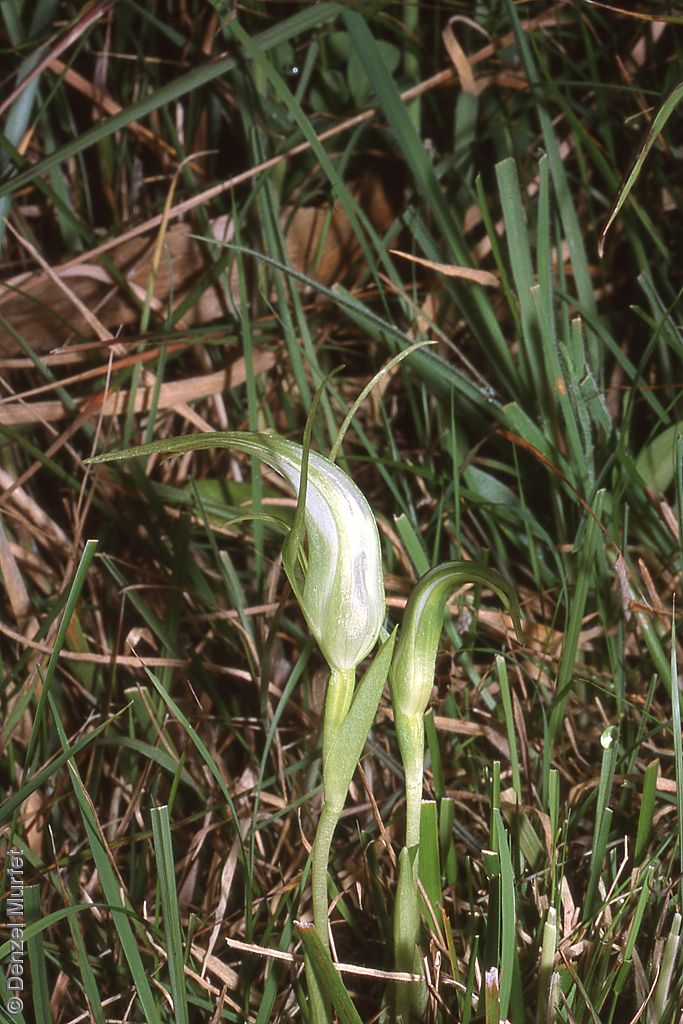
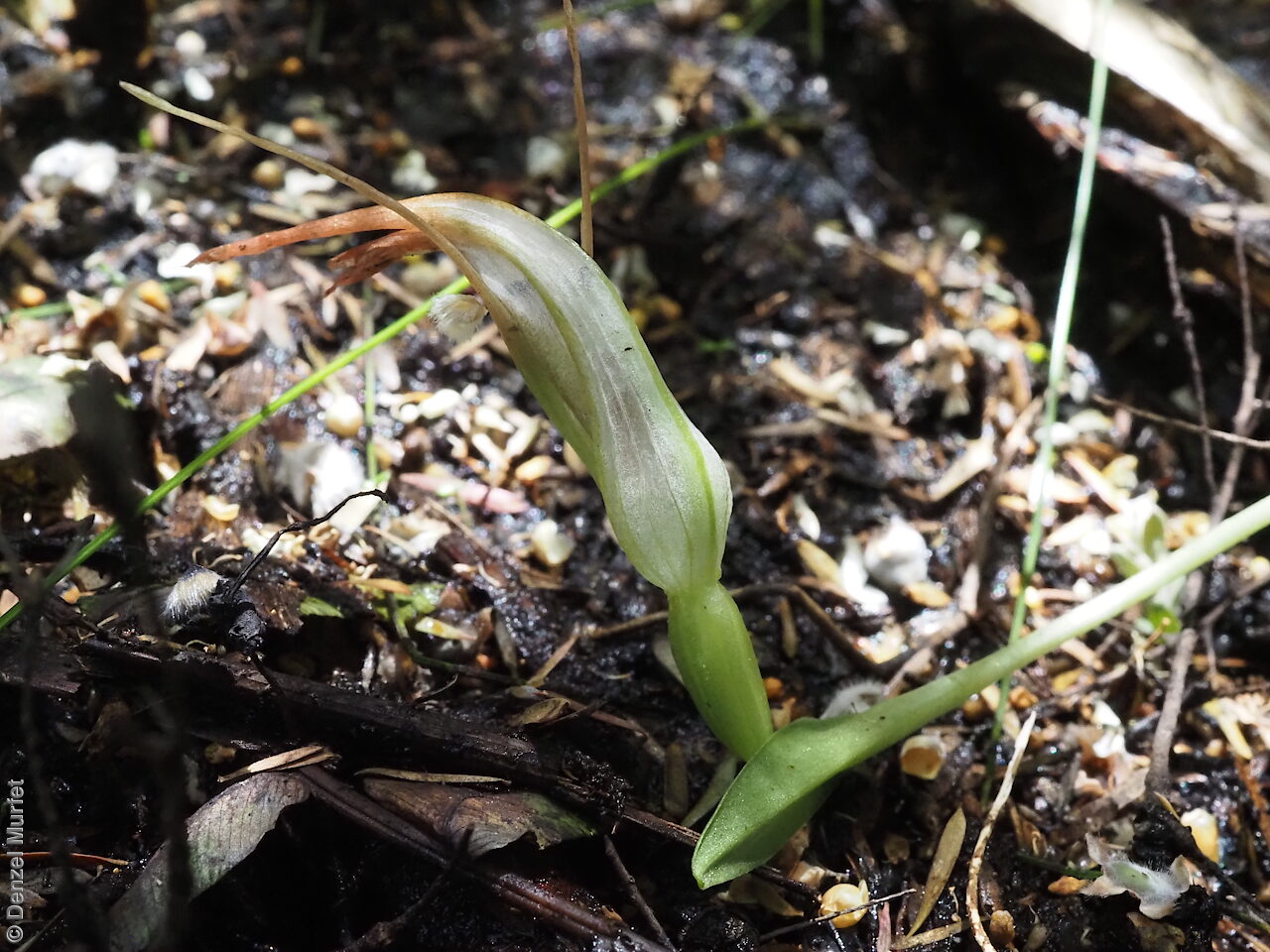

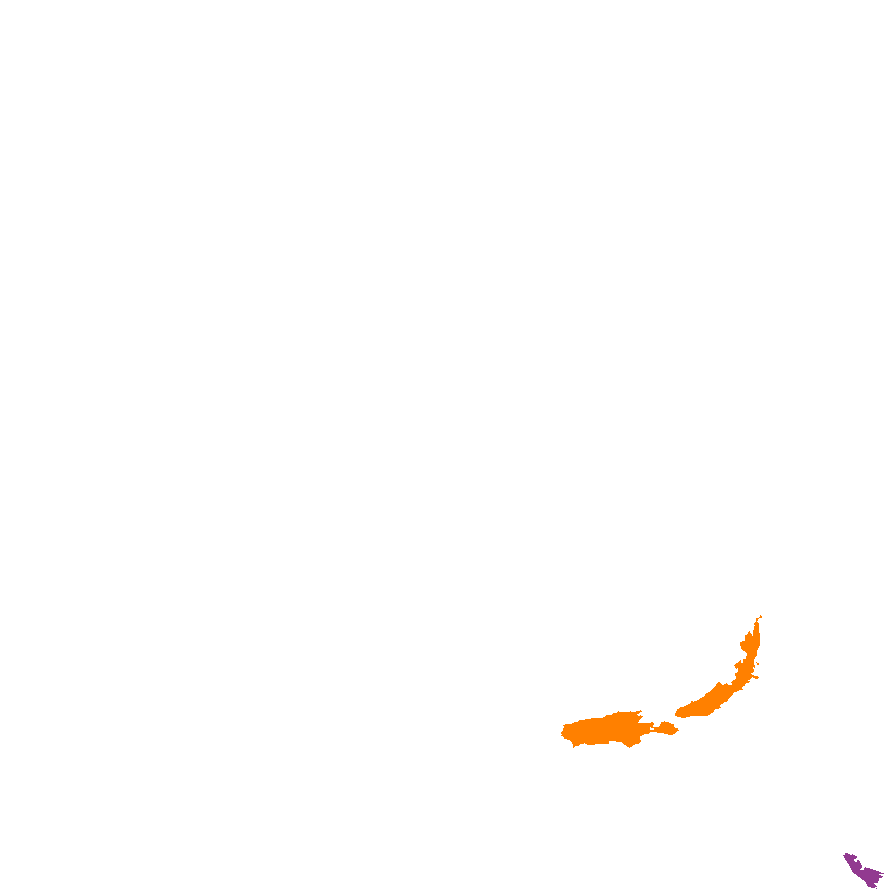
Botanical art
Prior names
Pterostylis furcata
Common names
Sickle Greenhood
Forked Greenhood
Etymology
Pterostylis from the Greek 'pteron' meaning a wing and 'stylis' meaning a style or column, referring to the prominent wings found at the top of the column in all species. Falcata from the Latin 'falcus' meaning curved or falcate, referring to the long curved galea apex.
Distribution and status
Found in the southern Mount Lofty Ranges, Kangaroo Island and the lower South-east in South Australia, growing in heavy clay or peaty soils of swamps and creeks in dense shade. Also found in New South Wales, Victoria, Tasmania and New Zealand. Native. Rare in South Australia. Common in the other the other states.
Herbarium regions: Southern Lofty, Kangaroo Island, South Eastern
AVH map: SA distribution map (external link)
Plant description
Annual terrestrial orchid growing from an underground tuber to 30 cm tall with a single flower and forming a loose rosette of 4-6 green, ovate-lanceolate to elliptic leaves. Flower single, to 8 cm long, erect or semi-nodding, dark green and white, with the galea apex flat or a long, sweeping curve and a bulge at the base. Dorsal sepal with long elongated point and lateral sepals erect and separated from the galea. Flowering between November and January. Fruits are brown papery ellipsoid capsule.
Seed collection and propagation
Collect seeds between December and February. Collect fat capsules as they start to dry and turn brown. Pods will split and release the seeds quickly and will require monitoring. To increase the chances of collecting mature pods, it is recommended that a small breathable bag (ie. Organza bags) be used to enclose the developing capsules. Place the capsules in a container that will hold fine seeds and leave to dry for a few weeks or until the capsule split. Then carefully hold the capsule and tap it gently to release the seeds. Store the seeds with a desiccant such as dried silica beads or dry rice, in an air tight container in a cool and dry place, refrigerator or in liquid nitrogen.
Fire response
Obligate re-spouter and re-seeder.
Longevity: >20 years
Time to flowering: 1 year for plants re-emerging from tuber. 2-3 years for seedlings.
Recovery work
In 2020-2021 this species was searched for post-fire in 1 year old fire scars. Further searches of historic localities will be undertaken with support from Kangaroo Island field naturalists & botanists in 2021-2022 as Pterostylis species are more detectable in 2-3 year old fire scars. Recorded populations will be assessed and seeds collected for Kangaroo Island in 2021–2022. Germination screening testing the response to fire cues will be undertaken in 2022. A single known population for mainland South Australia in a swamp near Myponga was visited in summer 2020-21 and is being monitored with the help of the landowner to collect seeds in 2021. This project was supported by the Emergency Seed Collecting Fund, a grant awarded to the Australian Seed Bank Partnership by the Royal Botanic Gardens, Kew on behalf of the UK Government..